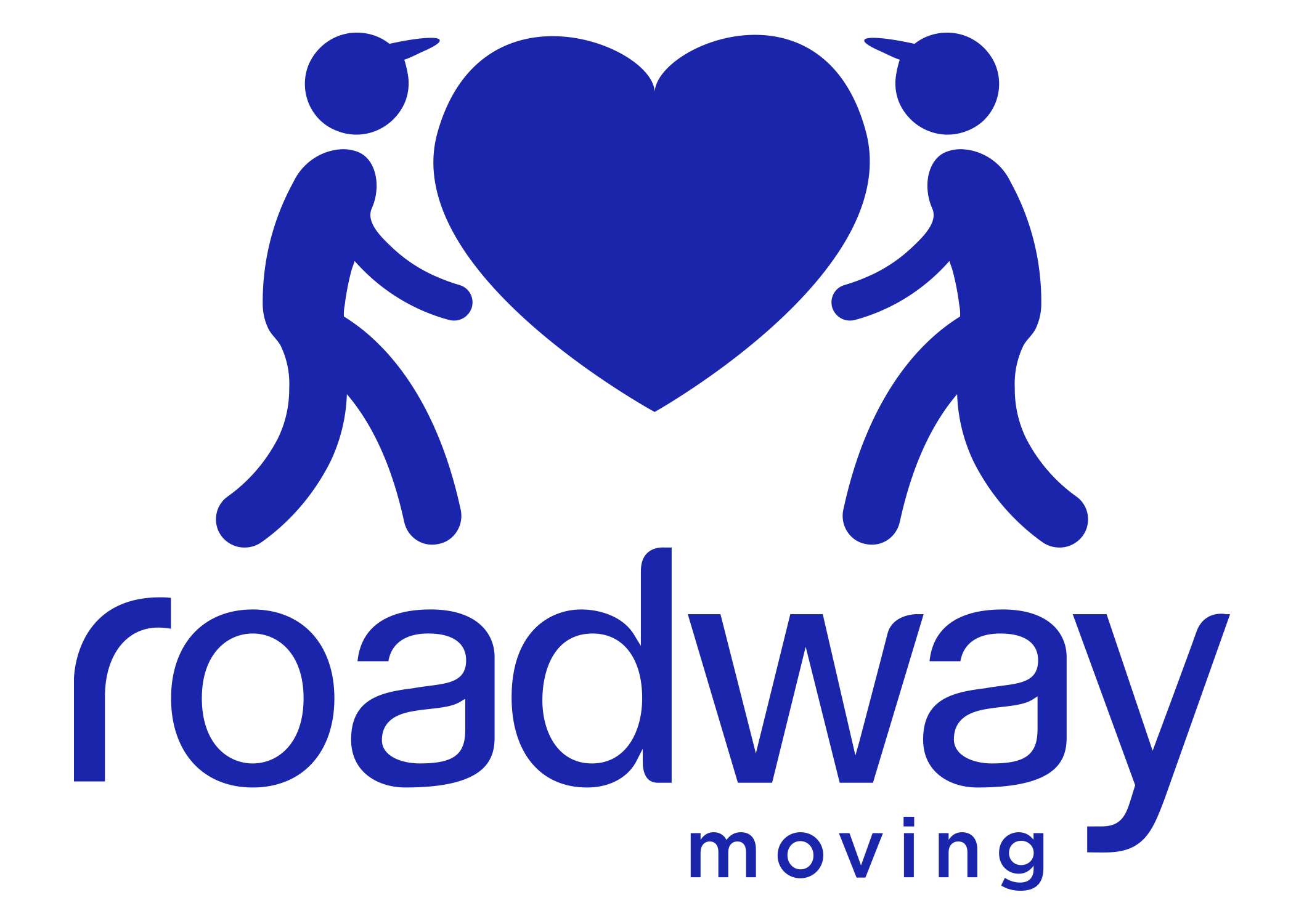The best local movers for Grand Rapids to Columbus moves
It’s not always easy to find a reliable local moving company in Grand Rapids that also handles long-distance moves to Columbus. Luckily, we’ve done the research for you. We evaluated 13 local movers in Grand Rapids who offer long-distance services, looking at cost, service quality, and customer reviews.
Below are the top local moving companies for long-distance moves from Grand Rapids to Columbus.
- TWO MEN AND A TRUCK: 4.5 out of 5 stars
- Corrigan Moving Systems: 4.5 out of 5 stars
- Powell Relocation Group: 4.44 out of 5 stars
- H & H Moving Company, LLC: 4.44 out of 5 stars
- College Hunks Hauling Junk & Moving: 4.36 out of 5 stars
Company Info
Years in Business: 16
DOT #: 2527384
Alternate Names: Phase Six Moving, LLC , Two Men and A Truck/Grand Rapids North
Services Offered
- Local moves
- Interstate moves
- Packing
- Unpacking
- Pianos
- Storage
- Safes
- Pay by credit card
Company Info
Years in Business: 97
DOT #: 77949
Alternate Names: Corrigan Moving Systems – Grand Rapids, Inc.
Services Offered
- Local moves
- Interstate moves
- International moves
- Packing
- Unpacking
- Offices
- Crating
- Storage
Company Info
State license #: 261884
Years in Business: 63
DOT #: 261884
Alternate Names: Powell Moving & Storage, Inc.
Services Offered
- Local moves
- Interstate moves
- International moves
- Packing
- Offices
- Pianos
- Hot Tubs
- Art
- Antiques
- Crating
- Shipment tracking
- Full-valuation coverage
- Storage
- Safes
- Pay by credit card
- DOD certified
Company Info
Years in Business: 7
DOT #: 3328141
Services Offered
- Local moves
- Packing
- Unpacking
- Offices
- Pianos
- Art
- Antiques
- Grandfather clocks
- Crating
- Storage
- Pay by cash
- Pay by credit card
Company Info
State license #: 2956991
Years in Business: 8
DOT #: 2378173
Alternate Names: MTC Learning Technologies, LLC
Services Offered
- Local moves
- Packing
- Unpacking
- Offices
- Storage
- Pay by credit card
How much does it cost to move from Grand Rapids to Columbus?
The average hourly rate for movers in Michigan is . Here are some general cost estimates for a full-service moving company, a moving container, or a rental truck:
| Move size | Moving company | Moving container | Rental truck |
|---|---|---|---|
| Studio / 1 bedroom | $915 – $3,067 | $586 – $1,400 | $316 – $575 |
| 2 – 3 bedrooms | $1,570 – $4,608 | $1,083 – $1,960 | $311 – $661 |
| 4+ bedrooms | $2,496 – $6,254 | $1,404 – $2,690 | $388 – $750 |
Cost to hire movers from Grand Rapids to Columbus
Hiring movers for a studio apartment or one-bedroom home from Grand Rapids to Columbus will cost between $915 and $3,067. The cost to move a two- to three-bedroom home from Grand Rapids to Grand Rapids will range from $1,570 to $4,608, and a large move from Grand Rapids to Columbus will cost from $2,496 to $6,254.
Cost of moving containers from Grand Rapids to Columbus
If you’re moving from Grand Rapids to Columbus, expect to pay between $586 and $1,400 for a small load. For a home with two or three bedrooms, prices typically range from $1,083 up to $1,960. Larger moves of four bedrooms or more can run between $1,404 and $2,690. Check out our guide on PODS cost for more details.
Check out the most affordable moving container companies for your move from Michigan.
Cost of moving truck rentals from Grand Rapids to Columbus
Renting a moving truck from Grand Rapids to Columbus is usually your cheapest option, but keep in mind you’ll be handling all the loading, unloading, and driving yourself.
If you’re moving a studio or one-bedroom apartment with a rental truck, expect to spend between $316 and $575. For two to three bedrooms, rates typically fall between $311 and $661. Relocating a four-bedroom (or bigger) home? You’re likely looking at anywhere from $388 up to $750 for your rental truck.
These quotes include estimated fuel costs.
Key factors that influence moving costs from Grand Rapids to Columbus
The cost of Grand Rapids movers will depend on:
- The size of your home: Smaller moves (like one-bedrooms) cost less, sometimes just $1,305, while larger moves (four-bedrooms) can hit $5,115.
- Time of year: Summer is peak moving season in Grand Rapids, which means higher prices.
- The type of mover you choose: Renting a truck ($316–$749) saves money but adds work compared to hiring pros.
What to know before moving from Grand Rapids to Columbus
Expect a bump in monthly expenses after the move – Columbus runs about -48% higher for singles and 1% higher for families than Grand Rapids.
Singles spend around $2,784 in Grand Rapids versus $5,333 in Grand Rapids; families pay $7,249 compared with $7,160.
Dig into the side-by-side details here:
| Grand Rapids | Columbus | |
|---|---|---|
| Average 1 BR rent | $1,900 | $1,567 |
| Average 3 BR rent | $3,200 | $2,957 |
| Average home value | $328,256 | $238,832 |
| Average income (per capita) | $63,299 | $65,075 |
| Cost of living (single) | $5,333 | $2,784 |
| Cost of living (family of four) | $7,160 | $7,249 |
| Unemployment rate | 4.3% | 5.7% |
| Sales tax | 6.0% | 7.5% |
| State income tax | 4.25% | 3.5% |
- If you’re heading to Columbus from Grand Rapids, you’ll find that rent is roughly 13% cheaper, potentially boosting your monthly savings.
- Your budget can breathe easier with home prices being close to 27% less in Columbus than in Grand Rapids.
- Fortunately, the average income in Columbus and Grand Rapids is quite close, within a 5% range, so financial stability is likely.
- Get ready to save some money on recurring expenses like food, gas, and utility bills in Columbus. On average, the cost of living for a single person there is 48% lower than in Grand Rapids.
- The cost of living for a family remains quite similar between Columbus and Grand Rapids, with only a marginal difference of 5% or less, so your expenses should remain steady.
- In Columbus, the unemployment rate is approximately 33% higher than in Grand Rapids, indicating a larger group of job seekers. This can lead to increased competition for positions.
- Sales taxes rise by 25% in Columbus over Grand Rapids, leading to heightened expenses for everyday essentials.
- Income taxes are 18% less in Ohio than in Michigan. With these lower tax rates, you can enjoy more take-home pay, simplifying your financial management.
Here’s a closer snapshot of how common everyday costs and monthly bills compare between Grand Rapids and Columbus:
| Living Expense | Grand Rapids | Columbus |
|---|---|---|
| Basic utilities | $118.12 | $263.89 |
| Cell phone plan | $45.33 | $60.77 |
| Dozen eggs | $3.25 | $3.21 |
| Loaf of bread | $3.46 | $2.98 |
| Fast-food/casual eatery (one meal) | $18.00 | $20.00 |
| Dinner for 2 (mid-range restaurant) | $67.50 | $80.00 |
| Gym membership | $33.99 | $46.25 |
- Basic utilities cost less in Grand Rapids than in Columbus, helping trim your monthly bills.
- Cell phone plans are cheaper in Grand Rapids than in Columbus.
- Eggs cost more in Grand Rapids than in Columbus.
- Bread is more expensive in Grand Rapids than in Columbus.
- A quick meal is cheaper in Grand Rapids than in Columbus.
- A mid-range dinner for two costs less in Grand Rapids than in Columbus.
- Gym memberships are more affordable in Grand Rapids than in Columbus.
How life is different in Grand Rapids vs. Columbus
| Grand Rapids | Columbus | |
|---|---|---|
| Population | 198,893 | 905,748 |
| Transportation score | 6 | 5 |
| Walkability score | 56 | 41 |
| Bike friendliness score | 52 | 48 |
| Crime index | 44.23 | 49.65 |
| Safety index | 55.77 | 50.35 |
| Air quality | Good | Good |
- Columbus’s population is about 355% greater than Grand Rapids.
- Columbus’s public transportation score of 5 out of 10 is lower than Grand Rapids’s score of 6.
- Columbus is less walkable than Grand Rapids with a score of 41 out of 100 vs Grand Rapids’s 56 out of 100.
- Columbus has a bike-friendliness score of 48 out of 100, which means it isn’t as accessible or safe for cyclists as Grand Rapids, which has a score of 52.
- Columbus’s crime rate is higher than Grand Rapids with a score of 49.65 compared to Grand Rapids’s 44.23. This means that Columbus neighborhoods are safer than 49.65% of all U.S. neighborhoods, and Grand Rapids neighborhoods are safer than 44.23%.
- Columbus is considered to be less safe than Grand Rapids with a score of 50.35 vs Grand Rapids’s 55.77.
- Air quality in Columbus is Good, and in Grand Rapids it’s Good.
Other things to consider for your Grand Rapids to Columbus move
- HOA rules: Be sure to review your community or HOA guidelines before moving day to avoid any surprises or delays.
- Elevator reservation: Make sure to arrange elevator access in advance if your building requires reservations for moving.
- Truck parking permits: To avoid fines or delays, check whether a parking permit is needed for your moving truck.
- State licensing: Although a local license is not required in Ohio, make sure the moving company you’ll be hiring is registered with U.S. Department of Transportation (USDOT). To verify if you’re dealing with a legal and licensed mover, you may ask them their USDOT registration number. Always verify licensing details before committing to a mover.
- State regulator: You can verify a Ohio moving license and its status through the state’s public utilities commission.
- Moving Permits: Ohio doesn’t require moving permits, but it’s still a good idea to check local parking rules before your move-in day.
- Change of address: To avoid missing any mail, we recommend submitting your USPS change of address form at least a week before your move. You can choose your official move date to make sure everything gets forwarded properly to Columbus. Start the process here.
- Moving company insurance: Every state sets its own rules for what insurance moving companies need to maintain. Opt for cost-free Released Value Protection from movers, offering minimal coverage with a maximum liability of 60 cents per pound per article. For comprehensive coverage, explore alternatives with your chosen moving company or consider a third-party insurance provider.
- Moving checklist: Follow our moving checklist to keep your move organized and stress-free.
Where to live in Columbus
Now that you’ve decided to make the move to The Arch City, these are the best neighborhoods to move to in Columbus.
Best neighborhoods for singles
- Downtown
- Short North
- Victorian Village
- Clintonville
- Grandview Heights
- Ashville
- Dublin
Best neighborhoods for families
- Bexley
- Clintonville
- Gahanna
- Hilliard
- Upper Arlington
Things to do in Columbus
Once you’re settled into your new home in Ohio, it’s time to get out and discover what Columbus has to offer. No matter your interests, there’s something for everyone here:
- Arts and culture: You’ll find museums and cultural hubs throughout Columbus, such as the Beeler Gallery, Billy Ireland Cartoon Library & Museum, Central Ohio Fire Museum, and Columbus Historical Society.
- Outdoor recreation: The city’s Franklin Park Conservatory and Botanical Gardens, Scioto Mile, Topiary Garden, and Schiller Park — and more — offering great opportunities to hike, bike, or relax in nature.
- Sports: Sports fans can join the excitement by supporting local favorites at an Columbus Crew (MLS)Ohio State Buckeyes (NCAA)Columbus Blue Jackets (NHL)Columbus Clippers (AAAE) game.
FAQ
When is the best time to move from Grand Rapids to Columbus?
The best time to move from Grand Rapids to Columbus is during the spring or fall. These seasons offer milder weather and avoid higher moving costs during the peak moving season in Grand Rapids.
When is the cheapest time to move from Grand Rapids to Columbus?
Since spring and fall are the most popular times to move from Grand Rapids to Columbus, moving in the winter could help you save money. Check out our guide on moving discounts for more tips.
How long does a move from Grand Rapids to Columbus take?
Moving from Grand Rapids, MI to Columbus, covers 320 miles and usually takes one to four days. Need to move faster? Some Grand Rapids movers offer expedited options. If you’re not ready to receive your items, look into storage solutions in Columbus.
Which movers in Grand Rapids give price breaks?
Some companies go the extra mile by offering discounts to certain groups. 1 movers here honor AAA discounts.
Always ask for a full discount list and check eligibility requirements before you commit to a mover.
Who can move pianos or antiques in Grand Rapids?
Specialty items need extra care and the right equipment. 10 movers in Grand Rapids advertise piano moving expertise. 4 movers in Grand Rapids provide antique moving services. State totals show 51 piano movers and 19 antique movers, with nationwide availability at 2,300 and 1,465.
Book early if you need these services — demand can outpace supply during busy moving seasons.
Helpful moving resources
Grand Rapids moving services
Popular Michigan routes
- Michigan to Ohio car shippers
- Michigan to California movers
- Michigan to Florida movers
- Michigan to Georgia movers
- Michigan to Illinois movers
- Michigan to New York movers
- Michigan to North Carolina movers
- Michigan to Ohio movers
- Michigan to Pennsylvania movers
- Michigan to Texas movers
- See All Moving Routes
Not what you were looking for?
Check out other categories that can help you find the information you need!
























